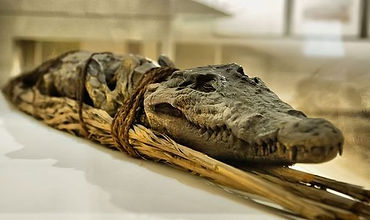By: Ethan Shen
The New York Times reported that archaeologists found 10 mummified crocodiles in a tomb at Qubbat al-Hawa to the west of the Nile River. These crocodiles appeared to be of two species: the Crocodylus Suchus, and the Crocodylus Niloticus. In comparison to other previously found mummified crocodiles, these specimens appeared to be in much better shape and are more fully grown. There was almost no linen or resin protecting the mummies, so researchers were able to study the mummies on site. Normally archaeologists would need to use a CT or X-Ray scan to see through the layers of bandages, but as there was nothing protecting the mummies anymore, they were able to study the mummies on-site.
The lack of resin probably meant that the mummies were mummified in the hot, sandy desert, before getting entombed. Researchers think these crocodiles got entombed before the Ptolemaic period (which took place between 332 BC and 33 BC), as during and after the Ptolemaic period, the ancient Egyptians used huge quantities of resin. The team theorized that crocodiles were buried between 500 BC and 400 BC, as animal mummification was very popular in that time period. The researchers hoped that they could soon use radiocarbon dating to know for sure when the crocodiles were buried. This truly was an amazing find.











